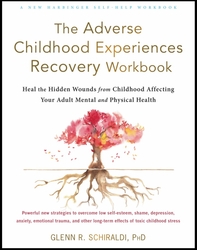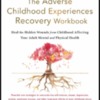Glenn R. Schiraldi, Ph.D. Psychology Today blog post, January 12, 2022
We’ve known for many years that regular exercise improves depression, anxiety, low self-esteem, troubled sleep, fatigue, and other symptoms related to stress. Thus, exercise is particularly beneficial for survivors of adverse childhood experiences (ACEs), who frequently struggle with symptoms of this nature.
In recent years we’ve learned how exercise strengthens the brain, preparing it to rewire—to form new neural pathways that will overwrite the distressing neural pathways that are formed in the early years in response to ACEs, keeping the brain on high alert.
Master Molecules
Exercise increases master molecules in the brain, such as brain-derived neurotrophic factor (BDNF). Without exercise, these molecules tend to decrease with stress and aging. The master molecules collectively:
- Increase brain volume, particularly in key regions involved with learning, memory, and cognitive functioning. This is accomplished by neurogenesis (the growth of new neurons to replace those destroyed by stress and aging), the growth of new capillaries that nourish the brain, and the growth of tissue that supports the neurons.
- Improve the health and functioning of neurons, including the ability of neurons to connect with neighboring neurons and form new neural pathways. This likely explains why exercise improves cognitive functioning—the ability to: concentrate, learn, remember, and reason; think quickly; and switch focus from one situation to another.
- Raise levels of antioxidants. Antioxidants limit damage to neurons caused by oxidative stress—thus keeping neurons alive longer.
Irisin is a recently discovered hormone found in humans and animals. Irisin is produced during exercise by the muscles and possibly the brain. In animal studies, Harvard researchers found that irisin appears to increase neurogenesis, decrease inflammation, and keep brain cells healthy and functioning.
Inflammation
Chronic, low-grade inflammation afflicts millions of Americans, and is linked to brain damage, cognitive decline, depression, and many of the leading causes of death (such as heart disease, cancer, and type 2 diabetes). The immune system normally mobilizes whenever it detects invading germs, toxins, or tissue damage. For unknown reasons, however, the immune system can remain on high alert and begin to attack the body’s healthy tissues, including the brain.
Signs and symptoms of chronic inflammation include sleep disturbance, fatigue, depression, anxiety, achy muscles and joints, gastrointestinal distress, headaches, and brain fog. Notice the overlap between these symptoms and stress-related mental disorders.
Neuroinflammation (inflammation in the brain or spinal chord) might also suppress neuorogenesis. Furthermore, neuroinflammation seems to promote the growth of the toxic proteins associated with Alzheimer’s disease. Exercise appears to reduce brain inflammation and these harmful proteins, which is probably why numerous studies link exercise to less dementia, including Alzheimer’s disease.
Obesity is one risk factor for inflammation, as fat cells produce pro-inflammatory chemicals. What’s an important tool for fighting obesity? Regular exercise!
Stress Regulation
As discussed in a previous blog, one of the problems with unresolved trauma is that stress arousal can become stuck on too high or too low. In these extreme states, where the overriding urge is to fight or flee, key areas of the brain go offline—such as the areas associated with clear thinking, rational speech, and feeling connected to self, emotions, and one’s body.
Exercise helps to return arousal to the resilient zone, where arousal is neither too high nor too low and where all regions of the brain work together again. This is accomplished either by expending the energy of high arousal or by reversing the immobilization of low arousal. Regulating arousal levels in these ways not only favors optimal mood and function in the present but also readies the brain for later processing and settling of disturbing memories from childhood. In addition, exercise regulates the stress hormones suspected to promote chronic, low-grade inflammation.
Small Changes
Experts consider exercise to be the best-established way to increase neurogenesis and an excellent way to increase overall well-being. Fortunately, small changes can reap large benefits in just weeks or months. In one well-designed study, sedentary adults with mild cognitive impairment began to exercise aerobically three times a week and follow a healthy diet. After six months, the subjects showed a nine-year reversal of brain aging. Studies also show that people in their nineties can increase muscle strength greatly in just two months.
Exercise Guidelines
- Start gently and gradually work up to at least 150 minutes a week of moderate-intensity aerobic exercise, such as walking, cycling, or swimming. This could be, for example, about thirty minutes per day five days of the week. Or you can break up your total daily exercise time into shorter bouts, say three ten-minute bouts a day.
- To your aerobic base, you can add strength and flexibility training to increase the benefits of exercise. Strength training can involve resistance bands, free weights, strength training machines, or moving your body weight (push-ups, pull-ups, or exercises that develop core muscles that help you bend and twist). Strength training is recommended two to three times a week on non-consecutive days. Build up gradually to two to four sets of about 10 repetitions per set.
- Don’t overlook yoga and tai chi, which help to reduce the stress that is linked to neuroinflammation.
- Try outdoor exercise in the morning. Sunlight raises levels of vitamin D, which improves brain function in many ways. About twenty minutes of sunlight is usually safe and sufficient to produce significant amounts of vitamin D. Morning exercise in the sun also strengthens sleep cycles and improves sleep. In addition, morning exercisers are more likely to stick to their exercises regiments.
5. Complex motor movements such as dance, racquet games, juggling, or playing an instrument lay down useful neural pathways.
6. To be safe, consult with your doctor before beginning an exercise program.
High-intensity Interval Training
High-intensity interval training (HIIT) yields benefits similar to moderate-intensity exercise, but in about half the time. This makes HIIT appealing to on-the-go individuals.
HIIT alternates short bursts of high-intensity with recovery intervals. The high-intensity intervals typically last 30 seconds to three minutes, followed by longer recovery intervals of moderate intensity. High-intensity means the heart rate is elevated to at least 70% of one’s maximum heart rate (calculated by subtracting one’s age from 220 and multiplying that number by .7 or slightly higher).
There are different variations. One successful protocol with older adults simply alternated slow walking with fast walking, for three minutes each, for at least thirty minutes, most days of the week.
HIIT can be done in the water, on a treadmill, or on a stationary bike. Start slowly—maybe 15 seconds or less of high-intensity bursts alternating with recovery periods of at least 30 seconds.
Do no more than two or three HIIT sessions per week, allowing two days for recovery between HIIT workouts. On the other days, do low or moderate intensity activities.
Conclusion
At some point in the future, you may wish to explore ways to settle distressing old neural pathways and replace them with positive, uplifting pathways. For now, exercise can optimize mood and your ability to cope with stress in the present, while preparing your brain to maximize the potential of neuroplasticity.
Exercise is clearly vital for good mental health and a healthy brain. Aim for a satisfying exercise plan that you can stick to for many years to come.
The next blog will show how good sleep is key to strengthening the brain and helping to prepare it to rewire troubling memories from ACEs.
Reference
Schiraldi, G. R. (2021). The Adverse Childhood Experiences Recovery Workbook. Oakland, CA: New Harbinger.
Photo credits
ViktorCap/istockphoto; Yaroslav Shuraev/pexel
About the Author
Glenn R. Schiraldi, PhD, has served on the stress management faculties at The Pentagon, the International Critical Incident Stress Foundation, and the University of Maryland, where he received the Outstanding Teacher Award in addition to other teaching/service awards. His fourteen books on stress-related topics have been translated into seventeen languages, and include The Adverse Childhood Experiences Recovery Workbook, The Self-Esteem Workbook. The Resilience Workbook, and The Post-Traumatic Stress Disorder Sourcebook. The founder of Resilience Training International (www.ResilienceFirst.com), he has trained laypersons, emergency responders, and clinicians around the world on the diverse aspects of stress, trauma, and resilience.







Comments (1)